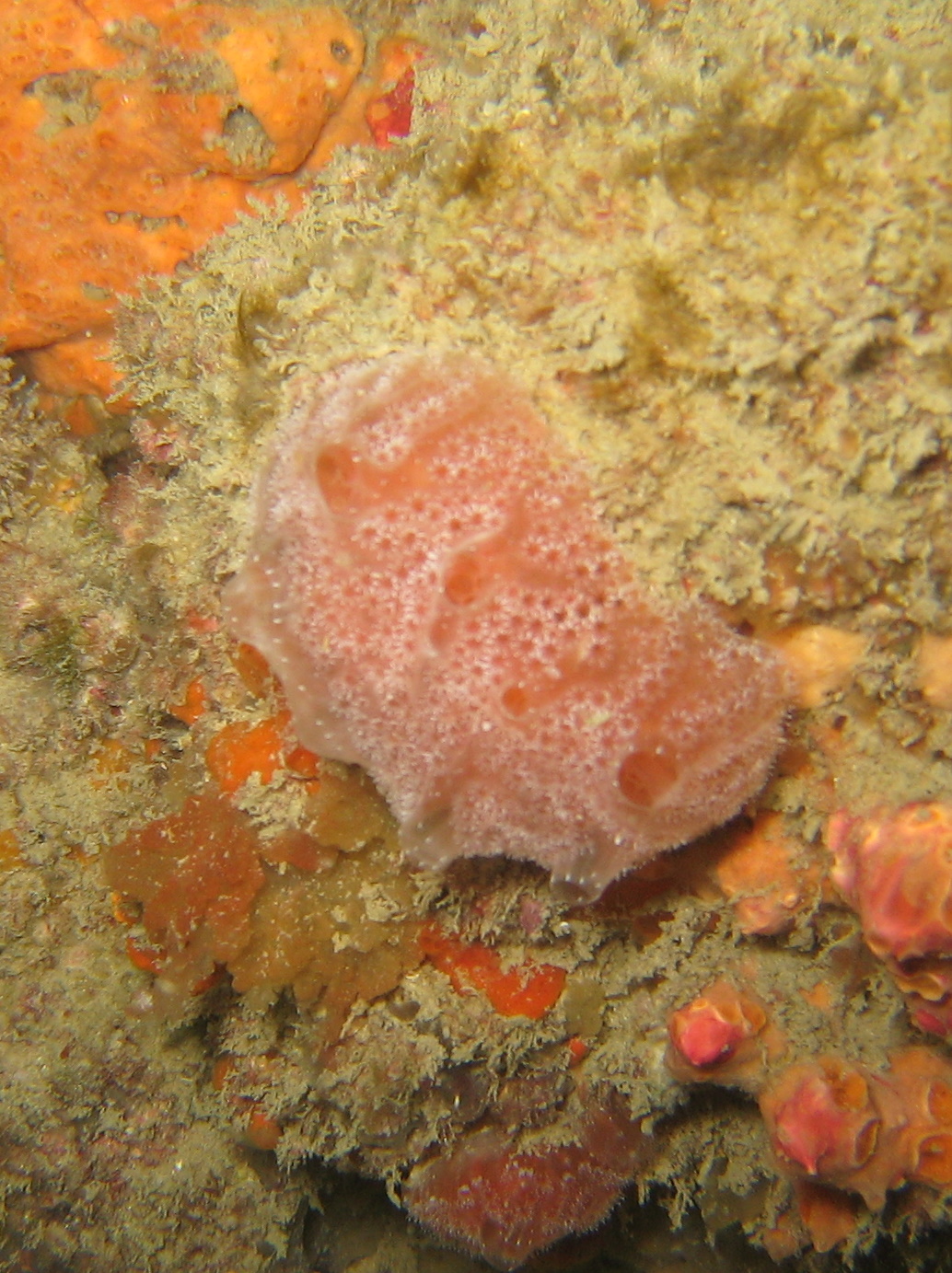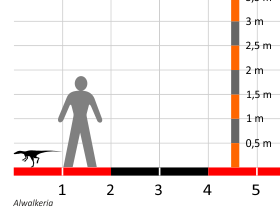|
Walkeria Tuberosa
''Walkeria tuberosa'' is a species of colonial bryozoan in the order Ctenostomatida. It is native to the Mediterranean Sea, and has spread to the Red Sea and the Indo-Pacific region. This species was first described in 1867 by the Austrian zoologist Camill Heller, and was named in honour of the Scottish minister and natural historian John Walker, a professor at the University of Edinburgh. There is some confusion as to whether the original scientific name of the bryozoan was ''Walkeria tuberosa'' or ''Valkeria tuberosa''. The genus name '' Walkeria'' was in 1994 given to a genus of dinosaurs, in this case being in honour of the British palaeontologist Alick Walker. When it was realised that the name had previously been used and was therefore not available, the dinosaurs were renamed '' Alwalkeria''. Description ''Walkeria tuberosa'' is a colonial bryozoan and forms small clusters developing from a thread-like stolon that creeps across the substrate. The zooids are vase- ... [...More Info...] [...Related Items...] OR: [Wikipedia] [Google] [Baidu] |
Camill Heller
Camill Heller (26 September 1823 – 25 February 1917) was a zoologist and anatomist. Heller was born in Sobochleben ( Soběchleby) near Teplitz in Bohemia (now Teplice, part of the Czech Republic). He received a doctorate in medical studies in Vienna in 1849. Heller was the 'Professor of Zoology and Comparative Anatomy' at the University of Krakow in Poland from 1858 to 1863 and from 1863 until his retirement in 1894 he taught at the University of Innsbruck in Austria. Heller primarily specialised in crustaceans but also worked on bryozoans, echinoderms, pycnogonids, and tunicate A tunicate is a marine invertebrate animal, a member of the subphylum Tunicata (). It is part of the Chordata, a phylum which includes all animals with dorsal nerve cords and notochords (including vertebrates). The subphylum was at one time ca ...s. References 1823 births 1917 deaths University of Vienna alumni Jagiellonian University faculty Academics of the University of Innsbruck Au ... [...More Info...] [...Related Items...] OR: [Wikipedia] [Google] [Baidu] |
Substrate (biology)
In biology, a substrate is the surface on which an organism (such as a plant, fungus, or animal) lives. A substrate can include biotic or abiotic materials and animals. For example, encrusting algae that lives on a rock (its substrate) can be itself a substrate for an animal that lives on top of the algae. Inert substrates are used as growing support materials in the hydroponic cultivation of plants. In biology substrates are often activated by the nanoscopic process of substrate presentation. In agriculture and horticulture * Cellulose substrate * Expanded clay aggregate (LECA) * Rock wool * Potting soil * Soil In animal biotechnology Requirements for animal cell and tissue culture Requirements for animal cell and tissue culture are the same as described for plant cell, tissue and organ culture (In Vitro Culture Techniques: The Biotechnological Principles). Desirable requirements are (i) air conditioning of a room, (ii) hot room with temperature recorder, (iii) microscope r ... [...More Info...] [...Related Items...] OR: [Wikipedia] [Google] [Baidu] |
Aplidium Undulatum
''Aplidium'' is a genus of colonial sea squirts, tunicates in the family Polyclinidae. There are about 188 species in the genus found in shallow waters around the world. Species The following species are listed in this genus according to the World Register of Marine Species: World Register of Marine Species. Retrieved 2011-11-20. *'' Aplidium abditum'' Kott, 2006 *'''' Kott, 1969 *'' |
Tunicate
A tunicate is a marine invertebrate animal, a member of the subphylum Tunicata (). It is part of the Chordata, a phylum which includes all animals with dorsal nerve cords and notochords (including vertebrates). The subphylum was at one time called Urochordata, and the term urochordates is still sometimes used for these animals. They are the only chordates that have lost their myomeric segmentation, with the possible exception of the 'seriation of the gill slits'. Some tunicates live as solitary individuals, but others replicate by budding and become colonies, each unit being known as a zooid. They are marine filter feeders with a water-filled, sac-like body structure and two tubular openings, known as siphons, through which they draw in and expel water. During their respiration and feeding, they take in water through the incurrent (or inhalant) siphon and expel the filtered water through the excurrent (or exhalant) siphon. Most adult tunicates are sessile, immobile and perman ... [...More Info...] [...Related Items...] OR: [Wikipedia] [Google] [Baidu] |
Flabellia
''Flabellia'' is a genus of green algae in the family Halimedaceae. ''Flabellaria'' is an accepted synonym of this genus. It is a monotypic genus and ''Flabellia petiolata'' is the only species; it is found in the eastern Atlantic Ocean and the Mediterranean Sea. Distribution and habitat ''Flabellia petiolata'' is native to the Mediterranean Sea and also occurs in the Canary Islands and Cape Verde. It grows in shallow waters with soft sediment. In 2020 it was recorded for the first time in southern England, a location much further north than southern Spain, its previous northern limit. The English population has been confirmed by morphological and molecular data to be identical with the Mediterranean population. Researchers are questioning whether this is a Relict (biology), relict species, previously overlooked, or a genuine expansion of the range of the alga. References Bryopsidales genera Bryopsidales Monotypic algae genera Taxa named by Ludwig Reichenbach {{green al ... [...More Info...] [...Related Items...] OR: [Wikipedia] [Google] [Baidu] |
Codium
''Codium'' is a genus of seaweed in the Chlorophyta of the order Bryopsidales. Paul Silva was an expert on the genus ''Codium'' taxonomy at the University of California, Berkeley. There are about 50 species worldwide. Description The genus has thalli of two forms, either erect or prostrate. The erect plants are dichotomously branched to long with branches forming a compact spongy structure, not calcareous. The final branches form a surface layer of close palisade cortex of utricles. The non-erect species form either a prostrate or globular thallus with a velvet-like surface, the final branches forming a close cortex of utricles. Distribution Ireland Two of these species are very rare in Ireland. '' Codium adhaerens'' has been recorded from a few sites on the west coast and from Tory Island on the north coast in County Donegal. In 1837 it was found in Church Bay in County Antrim,Morton,O. 1994. ''Marine Algae of Northern Ireland.'' Ulster Museum. but has not been found the ... [...More Info...] [...Related Items...] OR: [Wikipedia] [Google] [Baidu] |
Peyssonnelia
''Peyssonnelia'' is a genus of thalloid red alga, named after naturalist Jean-André Peyssonnel (1694–1759) It includes the algae commonly known as rumoi-iwanokawa, mayoi-iwanokawa and akase-iwanokawa. Specimens can reach around 20 cm in size. ''Peyssonnelia'' produces tetraspores. Taxonomy and Nomenclature ''Peyssonnelia'' belongs to class Florideophyceae, of the order Peyssonneliales and Family Peyssonneliaceae. There are 89 currently recognized species as of 2021. Its lectotype is ''Peyssonnelia squamaria''. The genus is the largest in the Peyssonneliaceae. Segregate Genera The genera ''Cruoriella'' and ''Cruoriopsis ''Cruoriopsis'' is a genus of red algae. It has sometimes been considered a synonym of ''Cruoriella'' Crouan & Crouan or part of the large genus '' Peyssonnelia''. A 2007 dissertation by Krayesky recognizes this genus, as does ITIS The Integ ...'' are sometimes considered to be part of ''Peyssonnelia'', but a 2007 dissertation by Krayesky se ... [...More Info...] [...Related Items...] OR: [Wikipedia] [Google] [Baidu] |
Thallus
Thallus (plural: thalli), from Latinized Greek (), meaning "a green shoot" or "twig", is the vegetative tissue of some organisms in diverse groups such as algae, fungi, some liverworts, lichens, and the Myxogastria. Many of these organisms were previously known as the thallophytes, a polyphyletic group of distantly related organisms. An organism or structure resembling a thallus is called thalloid, thallodal, thalliform, thalline, or thallose. A thallus usually names the entire body of a multicellular non-moving organism in which there is no organization of the tissues into organs. Even though thalli do not have organized and distinct parts (leaves, roots, and stems) as do the vascular plants, they may have analogous structures that resemble their vascular "equivalents". The analogous structures have similar function or macroscopic structure, but different microscopic structure; for example, no thallus has vascular tissue. In exceptional cases such as the Lemnoideae, where ... [...More Info...] [...Related Items...] OR: [Wikipedia] [Google] [Baidu] |
Littoral Zone
The littoral zone or nearshore is the part of a sea, lake, or river that is close to the shore. In coastal ecology, the littoral zone includes the intertidal zone extending from the high water mark (which is rarely inundated), to coastal areas that are permanently submerged — known as the ''foreshore'' — and the terms are often used interchangeably. However, the geographical meaning of ''littoral zone'' extends well beyond the intertidal zone to include all neritic waters within the bounds of continental shelves. Etymology The word ''littoral'' may be used both as a noun and as an adjective. It derives from the Latin noun ''litus, litoris'', meaning "shore". (The doubled ''t'' is a late-medieval innovation, and the word is sometimes seen in the more classical-looking spelling ''litoral''.) Description The term has no single definition. What is regarded as the full extent of the littoral zone, and the way the littoral zone is divided into subregions, varies in different c ... [...More Info...] [...Related Items...] OR: [Wikipedia] [Google] [Baidu] |
Lophophore
The lophophore () is a characteristic feeding organ possessed by four major groups of animals: the Brachiopoda, Bryozoa, Hyolitha, and Phoronida, which collectively constitute the protostome group Lophophorata.Introduction to the Lophotrochozoa – Retrieved 3 May 2010 All lophophores are found in aquatic organisms. Etymology ''Lophophore'' is derived from the Greek ''lophos'' (crest, tuft) and ''-phore'', ''-phoros'' (φορος) (bearing), a derivative of ''phérein'' (φέρειν) (to bear); thus crest-bearing.Characteristics The lophophore can most easily be described as a ring of ted tentacles surrounding the mouth, but it is often horseshoe-shape ...[...More Info...] [...Related Items...] OR: [Wikipedia] [Google] [Baidu] |
Zooid
A zooid or zoöid is a single animal that is part of a colonial animal. This lifestyle has been adopted by animals from separate unrelated taxa. Zooids are multicellular; their structure is similar to that of other solitary animals. The zooids can either be directly connected by tissue (e.g. corals, Catenulida, Siphonophorae, Pyrosome or Ectoprocta) or share a common exoskeleton (e.g. Bryozoa or Pterobranchia). The colonial organism as a whole is called a ''zoon'' , plural ''zoa'' (from Ancient Greek meaning animal; plural , ). Zooids can exhibit polymorphism. For instance, extant bryozoans may have zooids adapted for different functions, such as feeding, anchoring the colony to the substratum and for brooding embryos. However, fossil bryozoans are only known by the colony structures that the zooids formed during life. There are correlations between the size of some zooids and temperature. Variations in zooid size within colonies of fossils can be used as an indicator of ... [...More Info...] [...Related Items...] OR: [Wikipedia] [Google] [Baidu] |
Alwalkeria
''Alwalkeria'' (; "for Alick Walker") is a genus partly based on basal saurischian dinosaur remains from the Late Triassic, living in India. A thighbone found indicates a small bipedal form. It has been seen as a chimera. Etymology This taxon was originally named ''Walkeria maleriensis'' by Sankar Chatterjee in 1987, in honor of British paleontologist Alick Walker. However, since the original generic name was found to be preoccupied by a bryozoan, the name ''Alwalkeria'' was created in 1994 by Chatterjee and Ben Creisler. The specific name ''maleriensis'' is a reference to the Maleri Formation, in southern India, where its fossils were found. Description The only known specimen, holotype ISI R306 is incomplete and consists of parts of the front ends of the upper and lower jaws, 28 incomplete vertebrae from all parts of the spinal column, most of a femur, and an astragalus (ankle bone). The partial skull is about 4 centimeters long (1.5 in). Although material of ''Alw ... [...More Info...] [...Related Items...] OR: [Wikipedia] [Google] [Baidu] |






